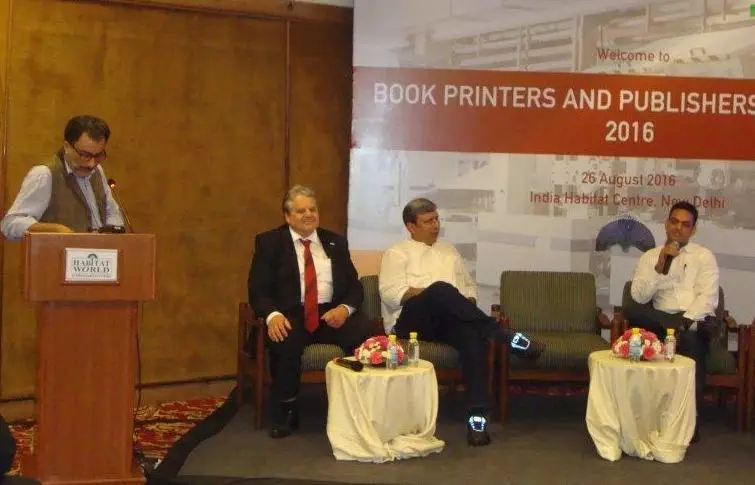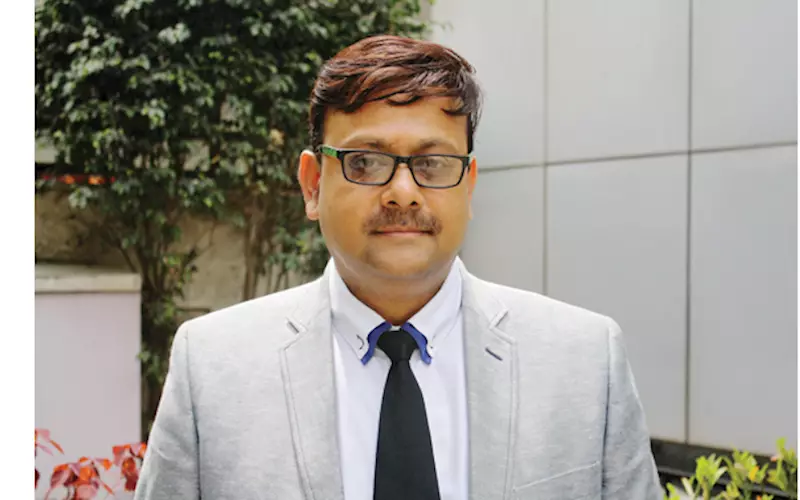Manroland digital finishing roadshow in Mumbai and Bengaluru
Manroland India is hosting a two-city road show in Mumbai and Bengaluru in the first week of May for book printers and publishers.
27 Apr 2017 | By PrintWeek India
In the late 2016, Manroland had hosted a Digital Conclave held in Delhi. Sudeep Bhattacharjee, managing director, Manroland Web Systems said, "The two events on 2 May and 4 May in Mumbai and Bengaluru respectively is a continuous effort by Manroland to develop an understanding of digital printing and finishing in India and to position our digital offerings.
On 26 August 2016, Manroland Web Systems organised a ‘Book Printers and Publishers’ Conclave’ in India Habitat Centre, New Delhi to discuss the use of digital printing in book production. Moderated by Ramu Ramanathan, editor, PrintWeek India, the panel had Thomas Abraham, managing director, Hachette India, Ajay Joshi of Penguin Random House and Alwin Stadler, vice-president, digital, Manroland Web Systems. The panel discussed a range of topics from the Nielsen Book Report to the state of trade publishing, the breakdown of traditional book distribution channels to areas where digital printing can have an impact and how workflow management is the key to optimising digital printing.
During the panel discussion in Delhi which was attended by the top book print CEOs, the panelists said, digital printing has enormous potential in India. For this to succeed, publishers, printers, and technology providers have to come together under one platform; teamwork is the mantra.

(From left), Ramu Ramanathan, editor, PrintWeek India; Alwin Stadler, vice-president, digital, Manroland Web Systems; Thomas Abraham, managing director, Hachette India and Ajay Joshi of
Penguin Random House at Book Printers and Publishers’ Conclave
Later in a one to one discussion with Ramu Ramanathan of PrintWeek India, Alwin Stadler said, "In digital printing, we always end up with the cost. I think we need to go beyond cost and focus on production. It would be different in different markets. Even in a high-price market like Europe or the US, customers are printing run-lengths of 5,000 books in digital. In India, printers are in the range of 5,000,000 books. It’s already a healthy business opportunity. You have to remember that the production process is completely different in digital printing. For example, you don’t have to store individual signatures. This alone saves 50% of overall production time. Thus, the cost structure and business model between conventional and digital printing varies."
He added, "I think it is an advantage when you have both offset and digital printing facility (as is prevalent in India). In this, when a book comes to you, you can actually decide which would be the best production process for the book in question. You can also do a combination printing – some blocks in offset and some in digital. We have the system in place to facilitate this. The strength of digital printing is changing. For example, now you can print parts of a book, with variable data, in digital and the rest in offset and find both the book blocks in the finishing line."
Speaking about the workflow aspect in Manroland systems, Stadler added, "The first thing we decided was to develop our own workflow for digital printing. A dedicated digital printer would have his own workflow to optimise his print production, but our workflow takes care of everything, for example, a job that needs high level of finishing. We are experts in finishing as it is our core business, and we can combine the process and produce books in a row with completely different content. We invested in our R&D to build tools to complete the workflow. If you do not have the workflow for fastest production and fastest finishing, you are lost."
He added, "This is where digital printing differs from conventional printing, where machines are at the centre. With digital printing, data handling and workflow are in the centre."
Stadler concluded in his comment to PrintWeek India, "Digital printing is here. To make the process faster, it is necessary to prepare the workflow structure. I think it is also necessary to increase the cooperation between publishers and printers, without which it would be difficult. The overall installation is a huge investment and it has to pay back. Thus, the printers need support. The faster this happens, the better."














 See All
See All